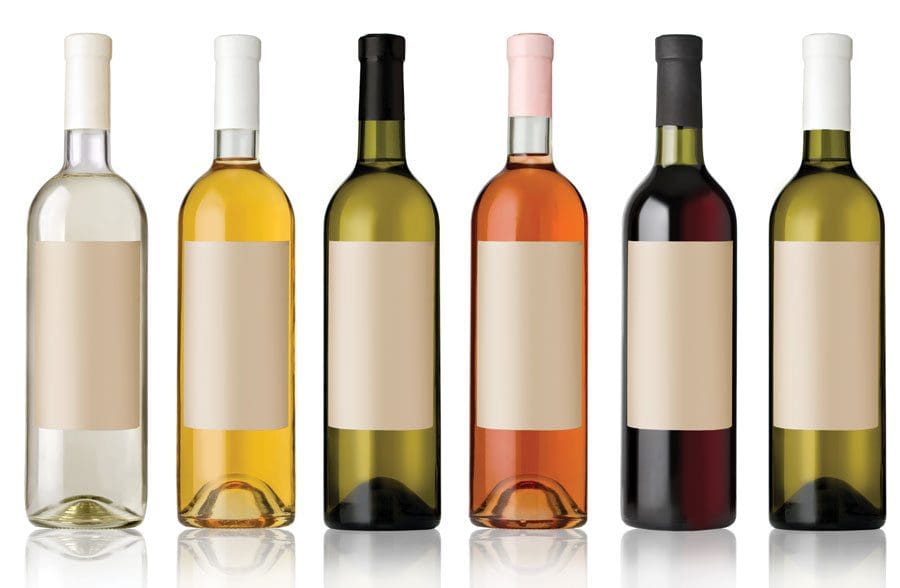
By Mary Ann DeSantis
THE WINE WORLD’S BIG SIX


Start with the basics when you want to learn about wine. A good place to begin is with the six grape varieties that are the foundation for many of the world’s best wines. This is the first of two articles discussing these amazing grapes.
Walk into any wine shop or supermarket and you can’t miss the Big Six—the grapes that Master Sommelier Andrea Immer Robinson calls the “power elite.” Although there are hundreds of grape varieties used in winemaking, these six—Chardonnay, Sauvignon Blanc, Riesling, Cabernet Sauvignon, Merlot, and Pinot Noir—are the nobility in the wine world because of their reputations for making outstanding wines. This month, Salute looks at white grapes in Part I of the Big Six.
Wine drinkers are usually divided into two camps: the white wine lovers and red wine enthusiasts—and rarely do the twain meet. It doesn’t matter if you are serving sirloin steak or lobster salad, some oenophiles just aren’t going to pour something different and that’s a shame.
As much as I love red varietals, I have discovered that white wine is the perfect complement to many foods, even some normally associated with red wines. I’ve also learned more about flavors in wine classes and tastings that focused on white wines. For instance, I had a very hard time distinguishing “acidity” in wines. Experts could talk about it all day, but I just couldn’t understand what I was looking for until I tried a Riesling from Alsace. And there it was: the acidity popped in my mouth!
The big three white grape varieties are Chardonnay, Sauvignon Blanc, and Riesling. These grapes are grown throughout the world, but climate makes them all different. In cool areas, like Germany and northern France, the wines are high in acidity, lower in alcohol, and often develop flavors of green apples and citrus. In warmer regions, like California, the wines often exhibit stone fruit or tropical flavors.
A great way to taste the difference among the white varietals is to sample them side-by-side. Have a light cheese and some bread or wine crackers so you can see how food changes the flavors. Serve white wines slightly chilled, but not too cold because that will mask the flavors.
CHARDONNAY
By far the most popular white wine and top-selling varietal, Chardonnay is the only choice for many wine drinkers. As soon as you pour a glass, you notice the yellow gold color and the rich scent. It tends to be full bodied with a creamy or buttery texture. Spice, vanilla, toast and oak flavors are often found in Chardonnays aged in oak barrels.
Recommended:
Miner Family Winery Wild Yeast Chardonnay, Napa Valley—Miner is a family-owned winery that ferments grapes using only indigenous or “wild” yeast cultures found on the skins of the grapes themselves or in the vineyards. I liked the spiced apple flavors and the nice balance of oak and acidity in the 2012 vintage. Winemaker Stacy Vogel uses a combination of Old World winemaking techniques and modern technology to make an elegant-tasting wine. (About $50 suggested retail).
Sterling Chardonnay Napa —Sterling wines are easy to find and often a good value. A 2012 vintage was served during a wine certification class earlier this year as an example of a full body wine with lots of buttery flavors. If you are not a fan of oaky Chardonnays, this may not be among your favorites. But it if you do prefer strong oak flavors, you’ll be delighted at the approximate $13 price tag.
SAUVIGNON BLANC
Sauvignon Blancs are often called “pool wines” in Florida because they are so refreshing and light. This varietal usually has strong aromas of citrus (grapefruit, lemon, and lime) and are almost always dry. France’s Sancerre wines are also made from this grape variety, and they can have more herbaceous or “earthy” notes like cut grass or green bell peppers. It pairs well with many dishes, especially seafood and vegetarian menus. An informative tasting would compare Sauvignon Blancs from different areas, like Washington State, California, France, and New Zealand.
Recommended:
Kim Crawford 2016 Sauvignon Blanc, Marlborough, New Zealand—This wine has been named among Wine Spectator’s Top 100 Wines four times. Marlborough is considered the benchmark when it comes to producing Sauvignon Blancs. It’s a bargain at about $18.
Franciscan Estate Sauvignon Blanc, Napa Valley – One of my favorite wines, the 2014 vintage offered a smooth taste that matched my Shrimp Alfredo. While other guests picked up grapefruit and lime flavors, I was reminded of ripe melons and honeysuckle. The 2015 vintage sells for about $17.
RIESLING
The Riesling grape produces wines that range from very dry to very sweet. The bottle’s back label may have the International Riesling Foundation’s scale indicating the level of sweetness. The growing regions also are a clue to the taste and style. German Rieslings tend to be sweet and light bodied; Austria and France’s Alsace Region offer the tangiest flavors and are among the most food friendly wines. A good Riesling is well balanced with the sweetness offset by high levels of acidity.
Recommended:
Albrecht Tradition Riesling, 2015, Alsace, France – One of my favorite go-to Rieslings with spicy Asian food or pungent barbecue. It’s a classic and distinctive Riesling that is dry with a little citrus and spice flavors. The aroma is more minerally than fruity, but it’s a fun, smooth wine to drink at an affordable $19.







